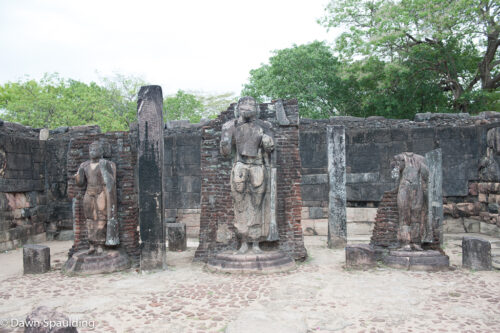The Hatadage was originally two stories high, built of stone, brick and wood, with a tiled roof. Three Buddha statues represented past, present and future, though only one remains, standing atop a lotus plinth. Some of the 54 stone pillars remain. It is one of the oldest structures, having been constructed by Vijayabahu (the first […]
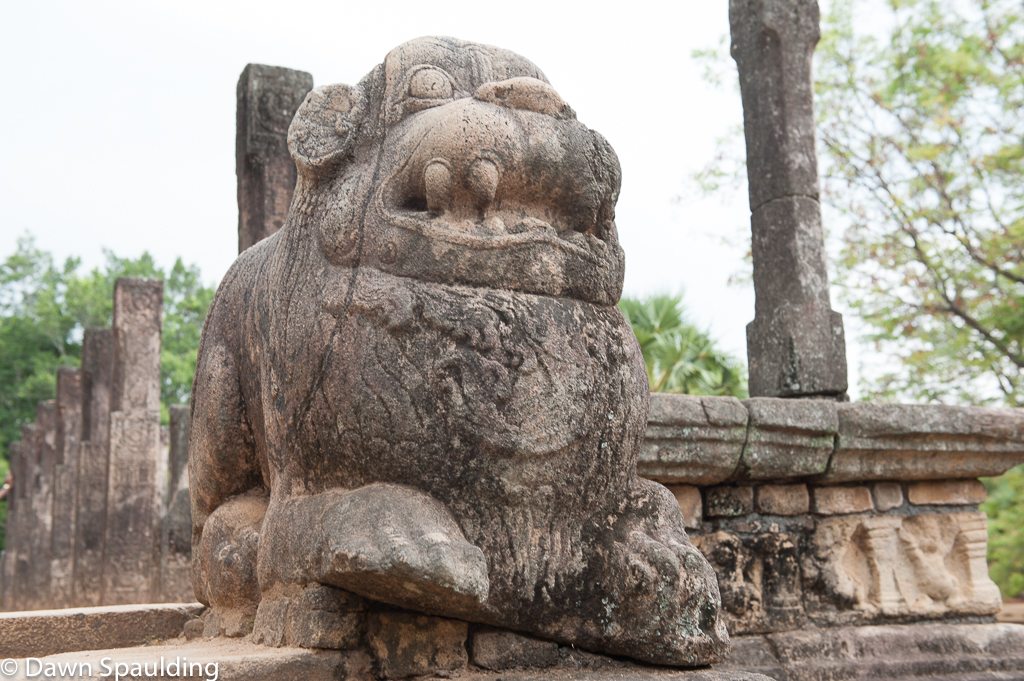
Polonnaruwa: Raja Vaishyabhuganga (Council Chamber)
The Council Chamber, or Raja Vaishyabhuganga, was where the king met with his ministers and officials. The wooden roof has long disappeared, but the elaborate base and carved pillars survive. Friezes of elephants, lions and dwarfs cover the base. Steps are embellished with makara (these look like mythical dragons) balustrades, a pair of moonstones and […]
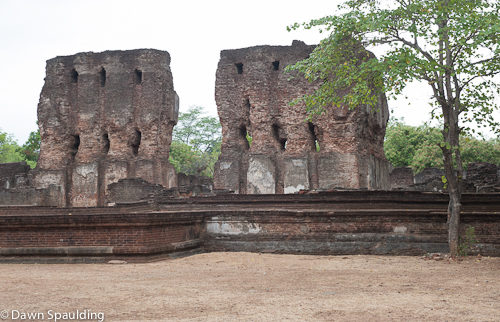
Polonnaruwa: Vijayanta Prasada
Vijayanta Prasada is the first ruins after entering the grounds. This was the royal palace, built by King Parakramabahu I in the 12th Century. In its heyday, the palace stood seven stories tall and contained 1,000 rooms. Construction took a little over seven years. It was destroyed by South Indian invaders in the 13th century. Burned bricks […]
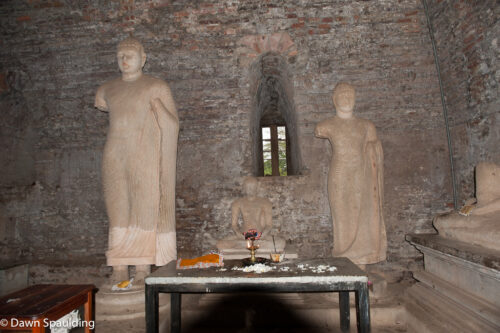
Polonnaruwa: Thuparama Gedige
The Thuparama Gedige is the smallest gedige (hollow Buddhist temple with thick walls) in Polonnaruwa. This has stood the test of time, as proven by the intact roof. Four standing Bodhisattva statues adorn the interior.
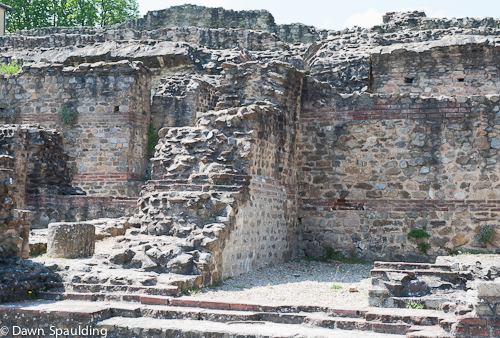
Les Théåtres Romains, Lyon, France
On our walk back downhill from the basilica, we came upon Les Théåtres Romains. It turns out Lyon’s Roman theater is the oldest in France, dating from 17 BC. When Augustus commissioned the theatre, which would serve as the community’s social center, it was only fitting to erect it on the highest hill, Fourvière, where […]
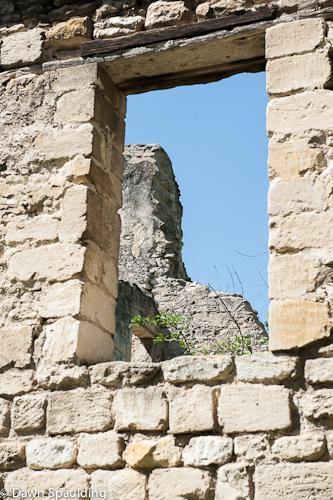
Fort St-André, Villeneuve-lés-Avignon, France
This sprawling 14th-century fort sits high on a mountaintop across the river from Avignon. I was curious to check it out since its grandness is visible from many surrounding points. Up close, it’s just as massive and solid as it appears from afar. In the 13th century, Fort St-André was built on Mount Andaon on […]
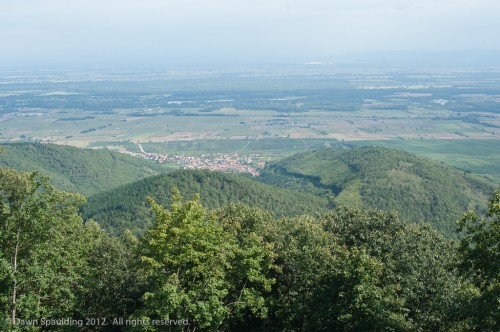
Château du Haut-Koenigsbourg, Alsace, France
Château du Haut-Koenigsbourg occupies a strategic position over the Alsace plains, the Vosges, the Black Forest and the Alps. It was originally constructed in the 12th century for the purpose of watching over the wine and wheat routes to the north and the silver and salt routes running east-west. The castle sits 700 meters high […]
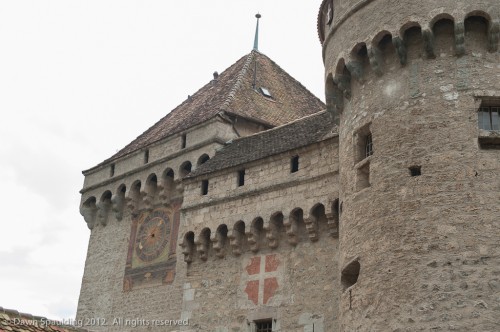
Château de Chillon
13th-century Château de Chillon is worth seeing. Even if you’re completely castled-out (understandable while touring this region), Chillon warrants a stop if, for nothing else, than to see what Byron was so enraptured by. Chillon is a well-preserved medieval castle that majestically perches over the lake amidst thick trees and snow-covered, craggy mountains. The château […]
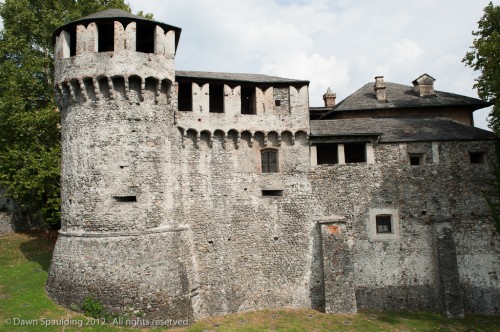
Castello Visconteo, Locarno
You can’t miss this as you wander through tiny Locarno. This fortified castle was originally built in the 10th century. The castle changed hands many times and was occupied by the Milanese Visconti clan in the 14th century. It was taken by French forces in the 15th century and the castle and town fell to […]
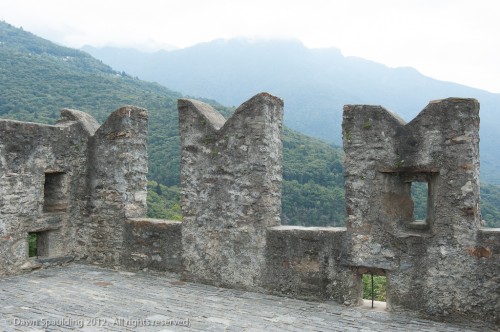
Bellinzona’s Three Castles
Doesn’t a town with three castles sound completely bad-ass? Really, what was so dangerous about the area or so valuable and worth protecting that one or even two castles were not sufficient? Just like modern times, everything comes down to location. Bellinzona lies in the crossroads of several important Alpine passes, which made it a […]
